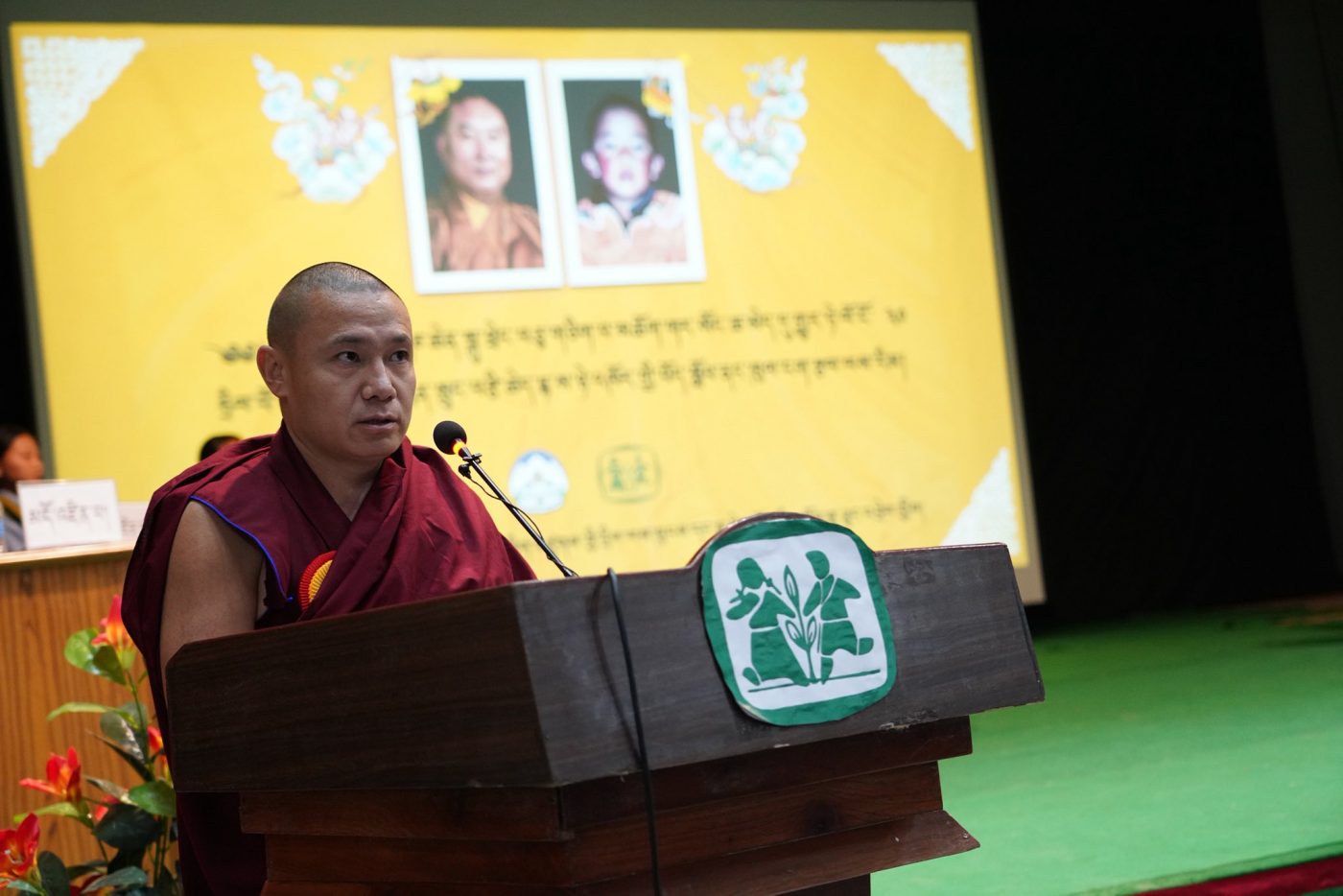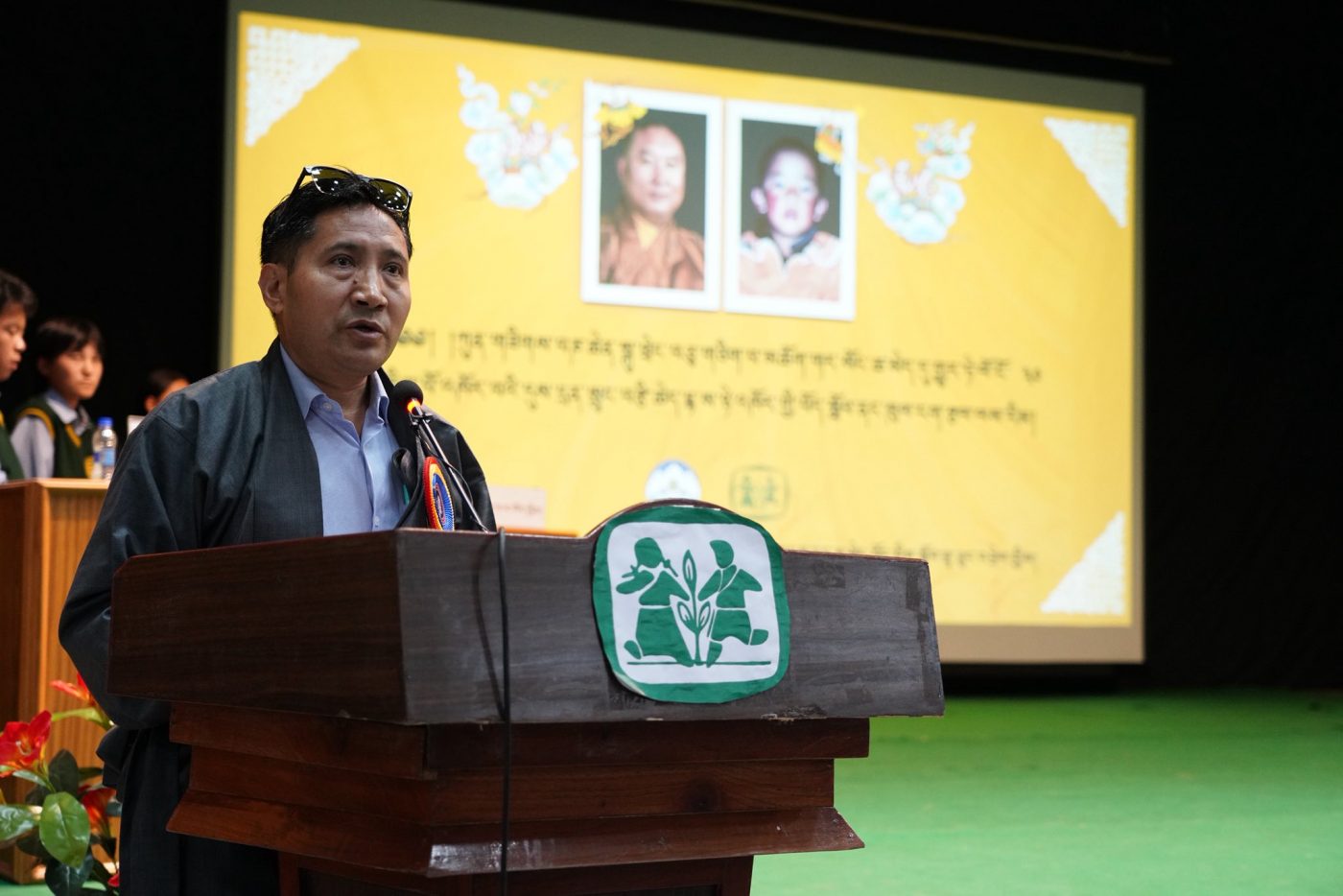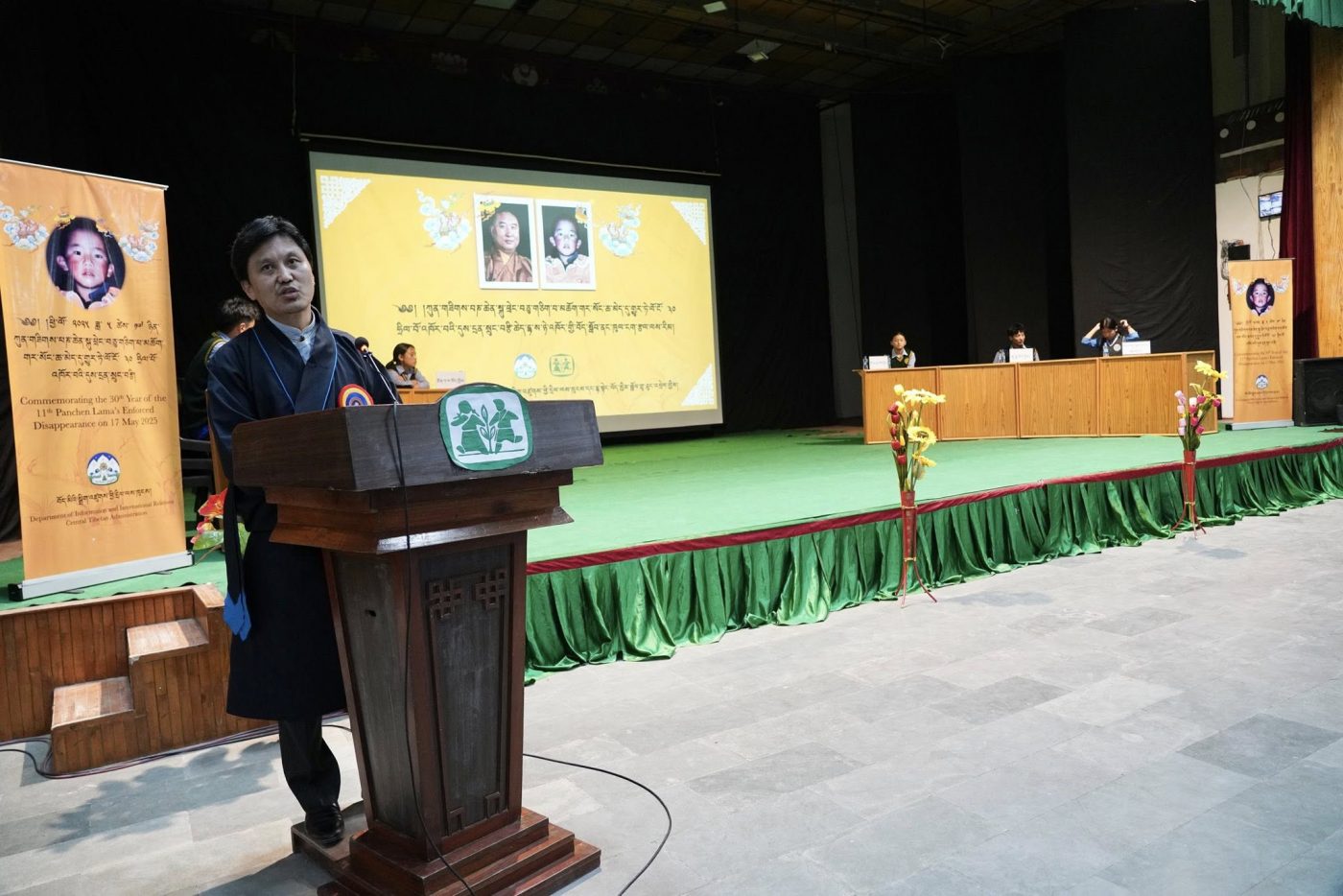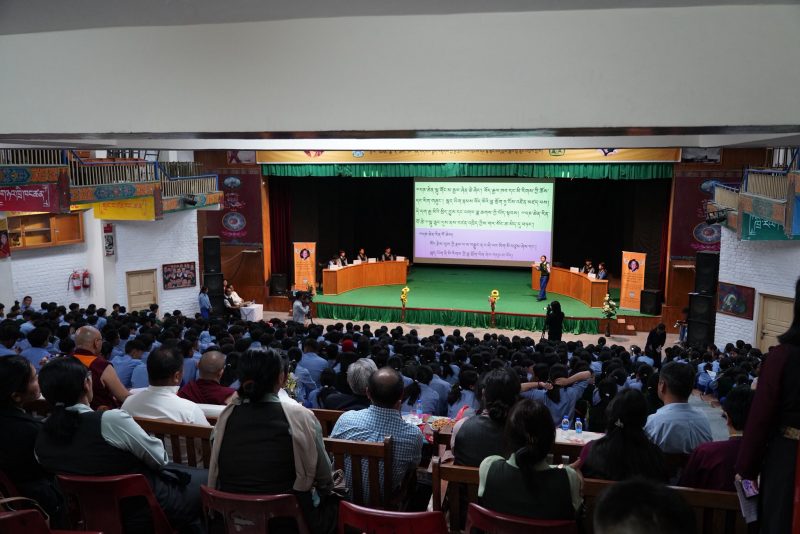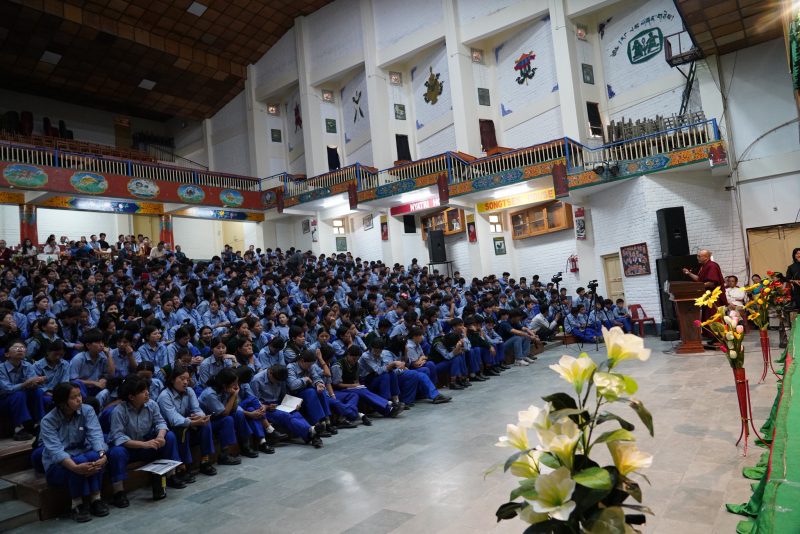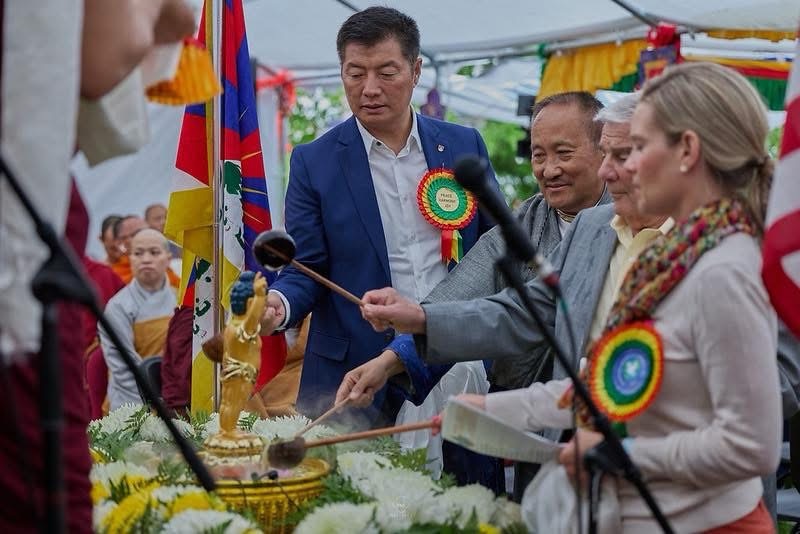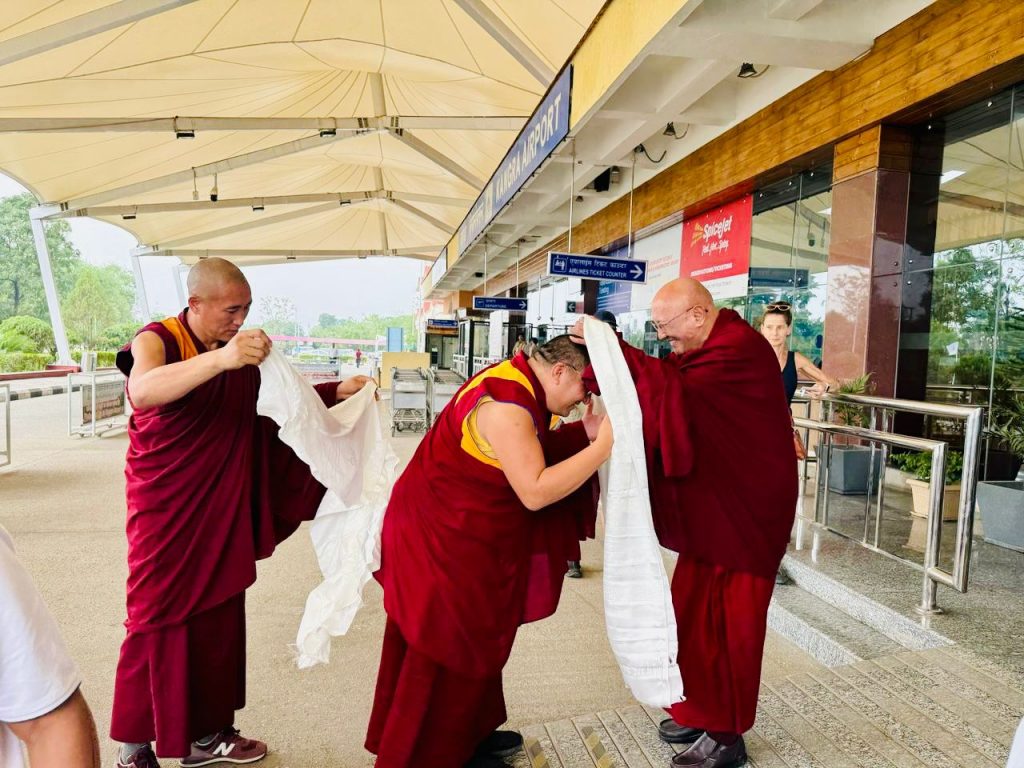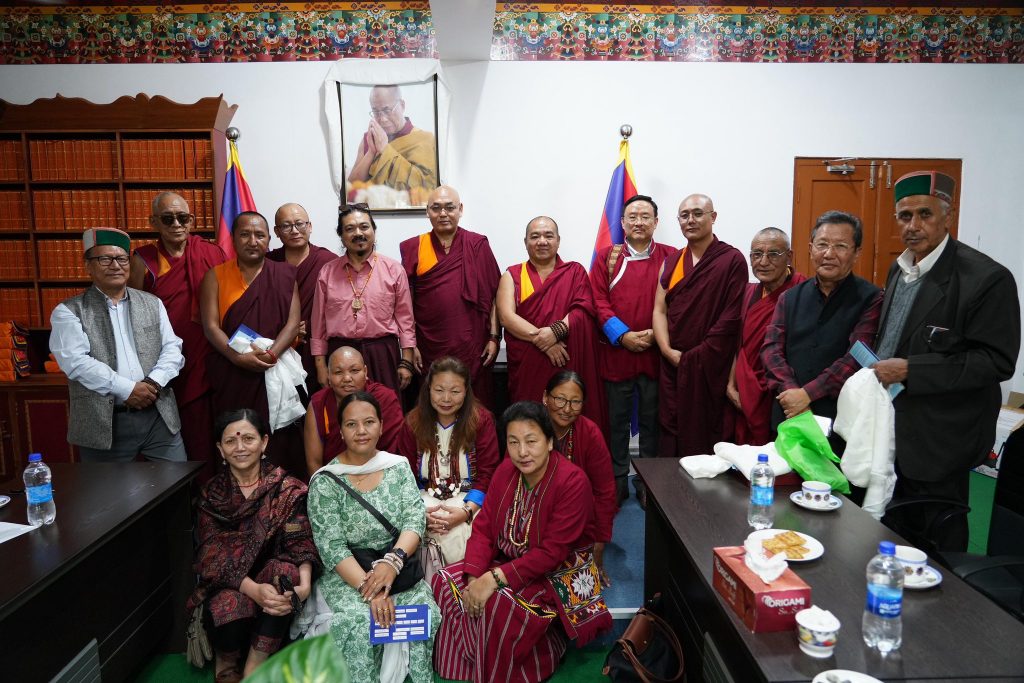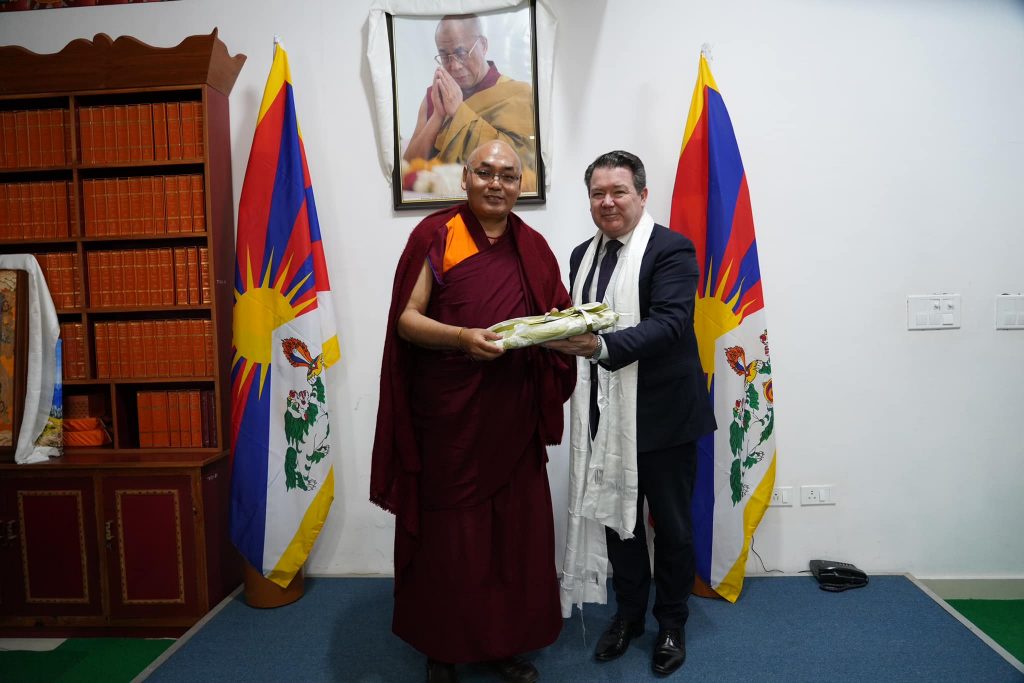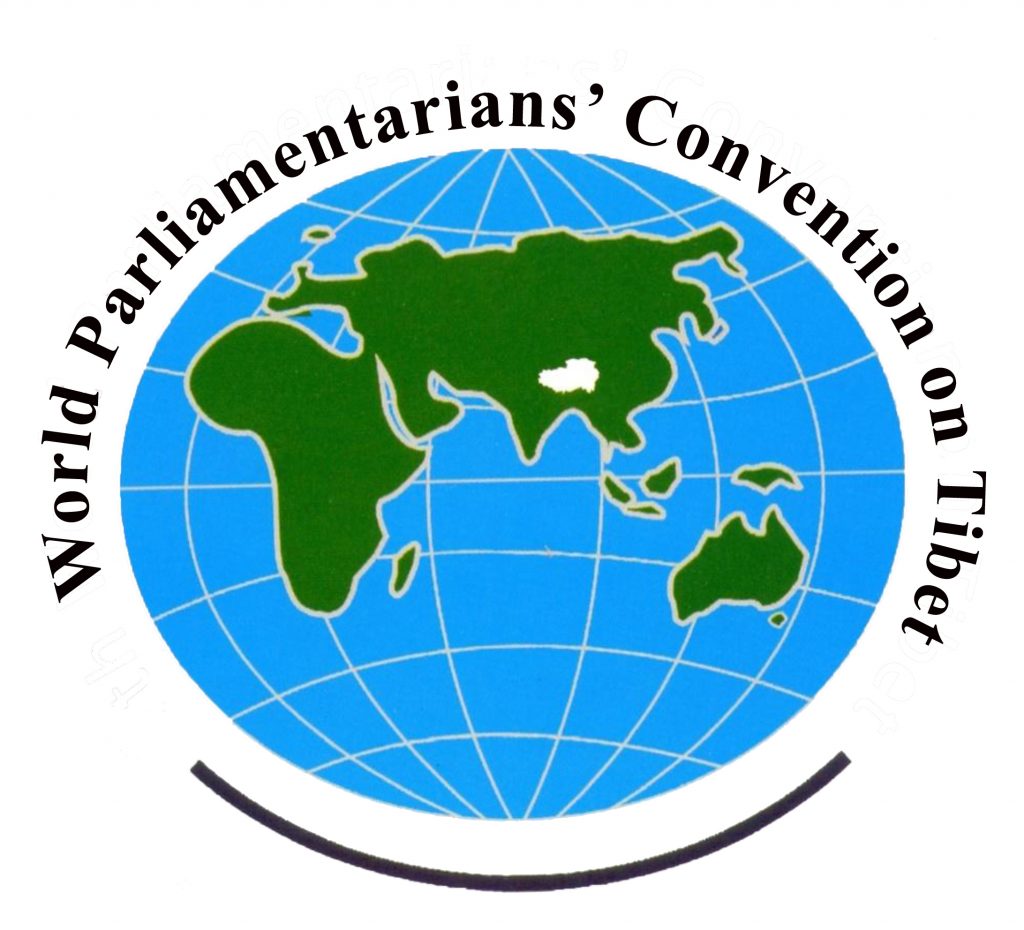
Dharamshala: To commemorate the 30th anniversary of the enforced disappearance of the 11th Panchen Lama, the Tibet Advocacy Section of the Department of Information and International Relations (DIIR), under the Central Tibetan Administration (CTA), in partnership with Upper TCV School, hosted a student elocution event focusing on the life and legacy of the 10th and 11th Panchen Lamas. The program took place on May 17, 2025, at the Hermann Gmeiner Hall of Upper TCV School.
The event featured keynote remarks by Chief Guest Speaker Khenpo Sonam Tenphel, along with special guests Geshe Lharampa Tenzin Dorjee (Singye Rinpoche) and other distinguished dignitaries.
The Speaker opened the session by expressing gratitude to the two Secretaries, the representative of Tashi Lhunpo Monastery in exile, and the participating students for their insightful and well-researched presentations. He acknowledged the importance of such gatherings, particularly in ensuring that Tibet’s political struggle, cultural heritage, and ethnic identity are passed on meaningfully to younger generations, not as mere obligations, but through deep understanding and appreciation.
He emphasized that the day’s topic, centered on the 11th Panchen Lama, is of critical importance for Tibetan religion and politics. He urged students and attendees to study this issue thoroughly and consider how future awareness campaigns should be conducted.
The Speaker provided an overview of the historical context of the reincarnation system in Tibet, tracing its origins from the Bon tradition to the introduction and flourishing of Buddhism in Tibet during the reigns of King Songtsen Gampo and King Trisong Detsen. He explained that while earlier Tibetan Buddhism did not have an established system of reincarnate lamas, the tradition evolved significantly in the 13th century with the recognition of Karma Pakshi as the reincarnation of Karmapa Dusum Khyenpa. This system, he noted, has since become a unique and integral part of Tibetan religious and cultural identity.
From a Buddhist philosophical perspective, he elaborated on the two primary modes of rebirth, one driven by karma and afflictions, and another through compassion and aspirational prayers. He explained the significance of the tulku system and how reincarnations are recognized within Tibetan Buddhism, underscoring that all major Tibetan traditions including Sakya, Gelug, Nyingma, Kagyu, and Bon who have adopted the practice.
Focusing on the central topic, the Speaker detailed the recognition process of the 11th Panchen Lama. He explained that following the death of the 10th Panchen Lama on January 28, 1989, His Holiness the 14th Dalai Lama was requested by Tibetans both inside Tibet and in exile to recognize the reincarnation. Through divination performed during the Tibetan New Year in 1991, it was revealed that the reincarnation was born in Tibet. In March of that year, His Holiness reached out to the Chinese Embassy in Delhi, offering full cooperation in the recognition process.
Significant milestones followed, including a 1993 meeting between Chadrel Rinpoche, head of the official search committee, and His Holiness’s elder brother Gyalo Thondup. In 1994, the search committee identified several candidates and strongly recommended Gedhun Choekyi Nyima. His Holiness the Dalai Lama’s divinations confirmed the same, and he subsequently composed a long-life prayer for the recognized child, which was sent confidentially to Chadrel Rinpoche.
Despite efforts to communicate with the Chinese authorities and clarify that there were no political motives or familial connections involved, the Chinese government rejected the recognition. In March 1995, they chose to carry out their own selection through the controversial golden urn process. In response, His Holiness officially announced Gedhun Choekyi Nyima as the 11th Panchen Lama on 14th May 1995, coinciding with an auspicious religious day related to the Kalachakra tradition.
Tragically, just three days after the announcement, on 17 May 1995, the Chinese authorities abducted Gedhun Choekyi Nyima, his family, and Chadrel Rinpoche. Their whereabouts remain unknown to this day. Chadrel Rinpoche, who had served the 10th Panchen Lama and led the reincarnation search with integrity, was sentenced to prison and subsequently disappeared.
The Speaker concluded by stressing the importance of understanding this historical and spiritual process, highlighting that further details are available in His Holiness the Dalai Lama’s book Voice for the Voiceless. He called upon the younger generation to remain informed and committed to preserving the truth and legacy of the Panchen Lama lineage.
The program concluded with a quiz session on this historically significant topic, followed by the official launch of a new book titled Tibet’s Stolen Child. The publication offers a detailed account of the 11th Panchen Lama’s life and the circumstances of his disappearance.

